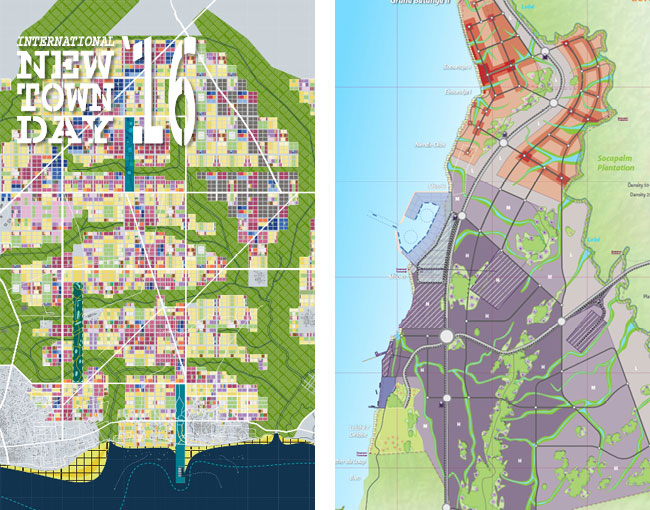Africa is key to the future of the world. The African population is growing faster than any other population and in 2040, Africa will have a larger labor force than China or India. Primarily cities will be the stage of this rapid population growth. Therefore, African urbanization is taking place at unprecedented speed. Though urbanization in Africa generally manifests itself in informal settlements, self-built by migrants from the countryside, national and local governments have also attempted to orchestrate urbanization by planning new cities.
Like anywhere else, New Towns in Africa are built with different ambitions and with different approaches. Some cities are built mainly to house an overflow of population, others aim to kickstart the national economy by attracting (foreign) investments. During the International New Town Day, various African New Towns will be represented, each showcasing a different way of dealing with urbanization. Of all these cities, the approaches of Ningo Prampram and Kribi may be furthest apart.
Ningo Prampram will become a huge planned extension of the city of Accra. Here, UN Habitat is pioneering a new type of urban planning which abandons the top-down organized blueprint in which every detail of the future city is already worked out and settled upon. Rather, the designers of Ningo Prampram aim to provide the foundations for a naturally evolving city. Ningo Prampram will be built in phases, according to the framework laid out in the urban plan. By doing so, Ningo Prampram’s developers aim to create a more flexible and resilient urban solution for the continuous urbanization in and around Accra.
Kribi evolved in a totally different context and is a classic example of an ‘economic city’. This newly urbanized area is meant to attract people and industry and is seen as a key step in improving Cameroon’s economy and sustainability. What is now partially a sea port and partially a tourist resort will be transformed into a deep sea port, an extensive industrial zone for heavy, medium and light industry and a modern residential city to house up to 300,000 people. Kribi will become an economic hub for the production and export of minerals, energy and petrochemicals and provide more jobs and economic value to the region.
What are the challenges and opportunities of both models? Is one approach better that the other, or does it all depend on the context and the reasons for which the city is built? By connecting the representatives of different New Towns in Africa, we aim to reassess what a city can be and should be to provide for the world’s largest urban population of the future.

